Nestled within the lush landscapes of Indonesia, the Javan Kingfisher (Halcyon cyanoventris) stands as a mesmerizing avian gem, captivating the hearts of bird enthusiasts and nature lovers alike.
Adorned with vibrant plumage and endowed with unique behaviors, this species epitomizes the beauty and diversity of Indonesia’s avian fauna.
Every aspect of the Javan Kingfisher exudes elegance and charm, from its brilliant blue wings to its distinctive red bill.
As a solitary hunter and territorial defender, it navigates its riparian habitat gracefully and precisely, embodying ecological resilience’s essence.
Join us on a journey to unravel the mysteries of this enchanting bird as we delve into its habitat, behavior, and conservation significance in the Indonesian archipelago.
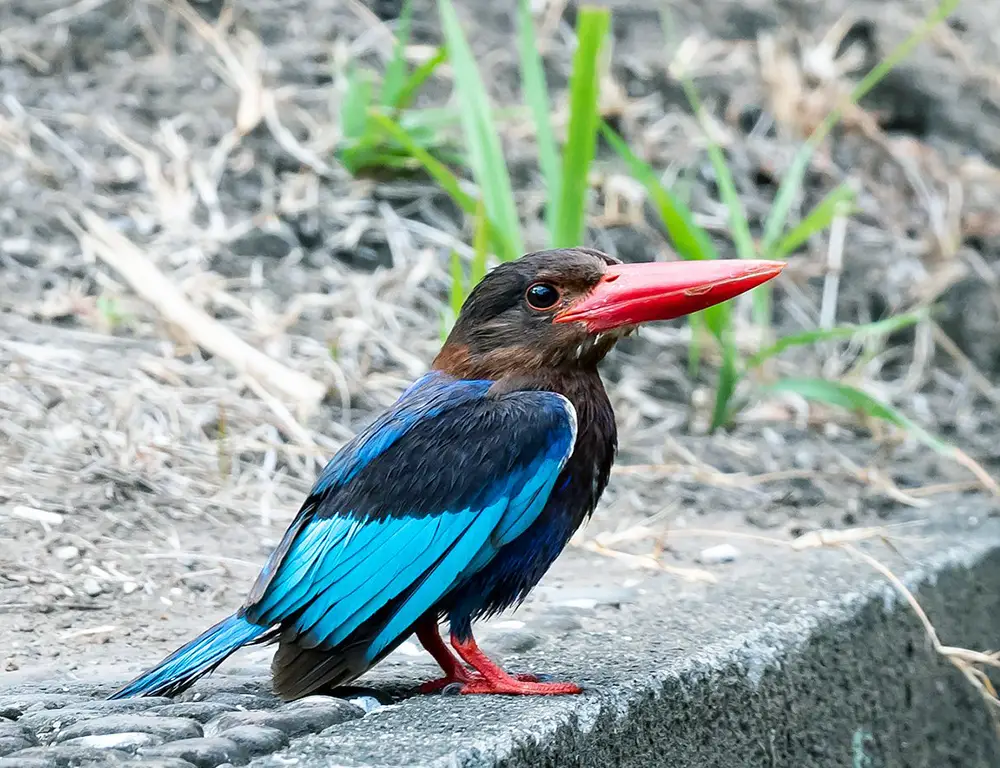
Physical Characteristics of the Javan Kingfisher
The Javan Kingfisher (Halcyon cyanoventris) is a captivating bird renowned for its vibrant plumage and distinctive features, making it a standout species in the avian world.
Here’s a detailed look at its physical characteristics:
Size
The Javan Kingfisher is considered a medium-sized bird, measuring approximately 23 to 26 centimeters (9 to 10 inches) in length. Its size is within the range of other kingfisher species, allowing for agile movement both in flight and while perched.
Wingspan
With a wingspan reaching up to 40 centimeters (16 inches), the Javan Kingfisher possesses wings proportionate to its body size, enabling graceful flight and efficient hunting maneuvers.
Plumage
One of the most striking features of the Javan Kingfisher is its vibrant plumage. The head and upper parts are adorned with brilliant blue feathers, creating a stunning contrast against its surroundings.
This vivid blue coloring is a hallmark of the species and contributes to its eye-catching appearance.
Throat and Undersides
In contrast to the blue upperparts, the throat and undersides of the Javan Kingfisher are adorned with pristine white feathers. This coloration adds further visual appeal to the bird’s overall appearance and helps it stand out against the backdrop of foliage or water.
Belly
The belly of the Javan Kingfisher is adorned with chestnut-colored feathers, providing warmth and protection while enhancing its aesthetic appeal. This chestnut hue complements the blue and white plumage, creating a harmonious color palette.
Tail
The tail of the Javan Kingfisher is characterized by rufous coloring, adding another dimension to its colorful ensemble. The rufous tail feathers contribute to the bird’s overall symmetry and balance in flight.
Bill
Perhaps the most distinctive feature of the Javan Kingfisher is its long, sharp bill, which is colored a vibrant red. This striking bill is well-adapted for precisely and efficiently capturing prey, mainly fish and aquatic insects.
Eyes
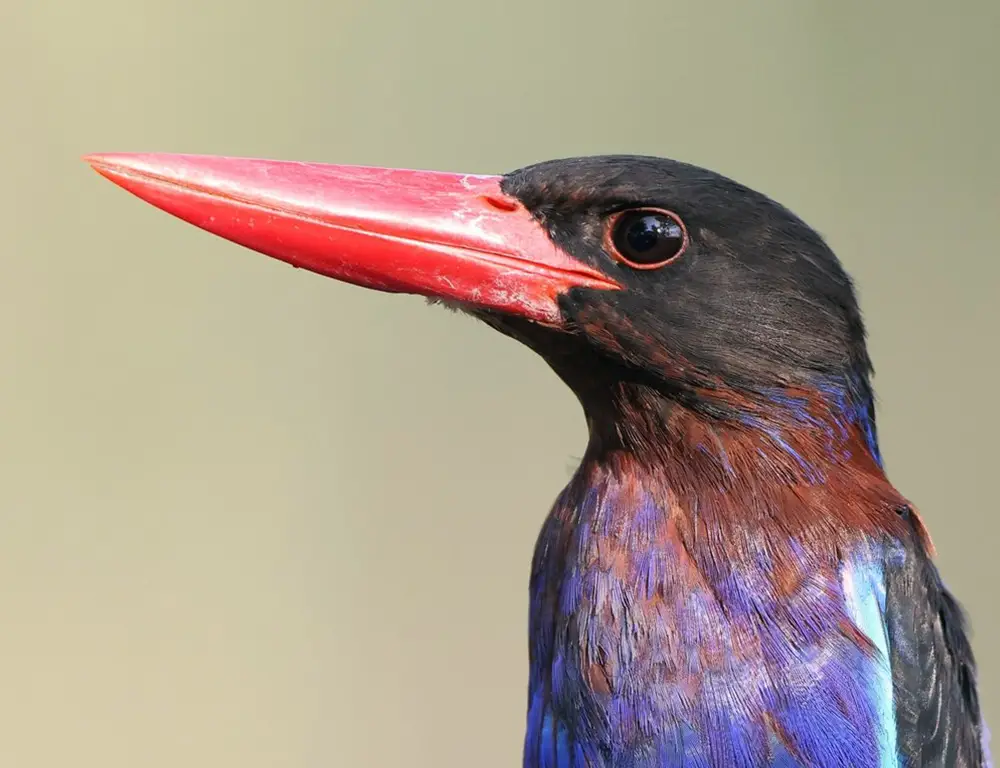
The eyes of the Javan Kingfisher are typically dark and piercing, providing excellent vision for detecting movement and spotting potential prey. Its keen eyesight is essential for successful hunting in diverse habitats.
Legs and Feet
The Javan Kingfisher has relatively short and sturdy legs, well-suited for perching on branches and other elevated surfaces. Its feet are equipped with sharp nails, enabling a secure grip and stability while hunting or resting.
Overall Appearance
When observed in its entirety, the Javan Kingfisher presents a breathtaking sight, with its vibrant blue, white, chestnut, and rufous plumage, complemented by its striking red bill and dark eyes.
This combination of colors and features exemplifies the beauty and elegance of this remarkable species, making it a prized subject for birdwatchers and nature enthusiasts alike.
Habitat and Distribution of the Javan Kingfisher
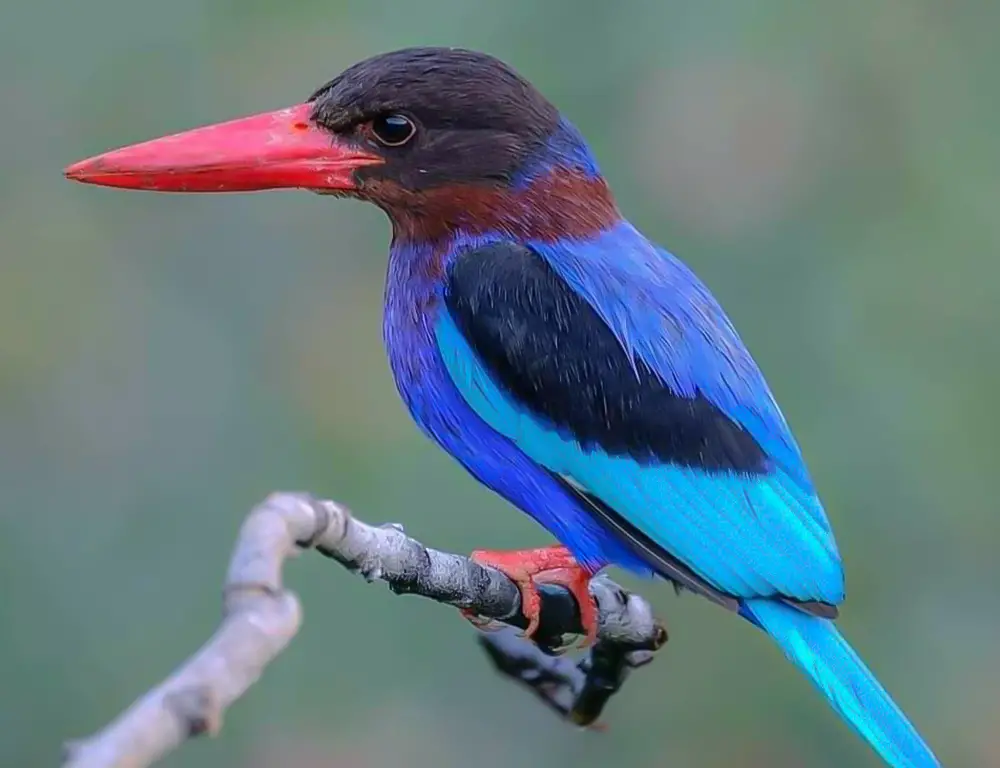
The Javan Kingfisher (Halcyon cyanoventris) is predominantly found in Indonesia’s lush and diverse landscapes, particularly in Java, the most populous island in the Indonesian archipelago.
Here’s an overview of its habitat and distribution:
Primary Habitat
The Javan Kingfisher thrives in various habitats, including tropical forests, mangrove swamps, riverbanks, and coastal areas.
It exhibits a preference for habitats with access to freshwater bodies such as rivers, streams, ponds, and marshes, where it can find an abundance of prey.
Lowland Areas
While the Javan Kingfisher is primarily associated with lowland regions, it has been documented at elevations of up to 800 meters (approximately 2,600 feet) above sea level.
Adapting to varying elevations expands its potential habitat range within suitable environmental conditions.
Island Distribution
The species is endemic to Java, where it is most commonly encountered, but it also occurs on nearby islands such as Bali and Madura. Habitat availability, prey abundance, and ecological connectivity influence its distribution across these islands.
Forests and Waterways
Javan Kingfishers are often observed in forested areas adjacent to water bodies, where they can find ideal conditions for hunting and nesting.
They utilize the dense foliage and overhanging branches for perching and scanning for prey, while the nearby water sources provide opportunities for fishing and hunting aquatic insects.
Urban Environments
In some cases, Javan Kingfishers may adapt to urban environments with suitable habitat features, such as parks, gardens, and green spaces near waterways. However, their presence in urban areas is generally limited compared to their natural habitats in pristine ecosystems.
Conservation Concerns
Despite its adaptability to various habitats, the Javan Kingfisher faces conservation challenges due to habitat loss, degradation, and fragmentation caused by human activities such as deforestation, urbanization, and pollution.
Conservation efforts focused on preserving and restoring its natural habitats are crucial for ensuring the long-term survival of this iconic species.
Reproduction and Life Cycle of the Javan Kingfisher
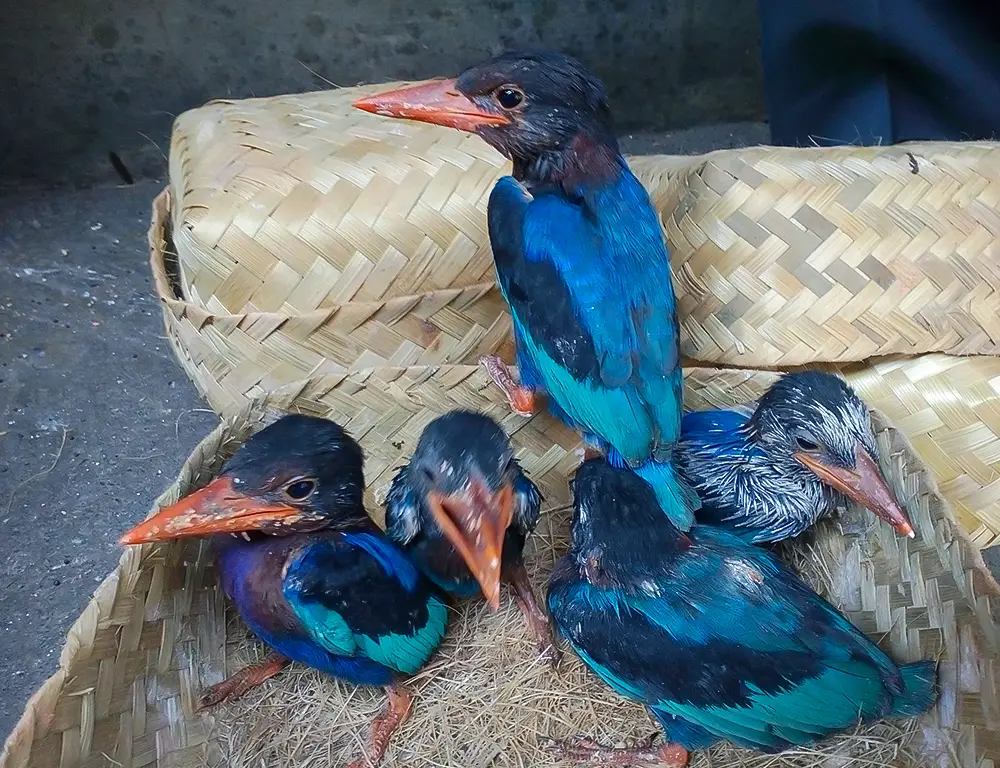
The Javan Kingfisher (Halcyon cyanoventris) follows a fascinating reproductive cycle characterized by courtship rituals, nest construction, egg-laying, incubation, and parental care.
Here’s an overview of its reproduction and life cycle:
Courtship and Pair Formation
The breeding season for Javan Kingfishers typically occurs from September to January. During this time, individuals engage in courtship displays to attract potential mates.
Courtship rituals may involve vocalizations, aerial displays, and exchanging food items between mates. Once pairs are formed, they establish territories for breeding.
Nest Construction
Javan Kingfishers construct their nests in burrows dug into earthen banks, often near water bodies such as rivers, streams, or ponds. The male and female work together to excavate the burrow, using their bills and feet to dig a tunnel several meters long.
The tunnel leads to a nesting chamber where the eggs are laid and incubated.
Egg-Laying
After completing the nest burrow, the female Javan Kingfisher lays a clutch of eggs, typically 2-3 eggs.
The eggs are white and glossy, with both parents taking turns to incubate them. Incubation lasts about 17-19 days, during which the parents are responsible for keeping the eggs warm and protected.
Incubation and Hatching
Once the eggs hatch, the nestlings emerge blind and helpless, relying entirely on their parents for warmth and food. The parents continue to take turns incubating the nestlings and feeding them with regurgitated food items, primarily small fish and aquatic invertebrates.
Parental Care
Both male and female Javan Kingfishers play active roles in caring for their offspring. They diligently provision the nestlings with food, protect them from predators and adverse weather conditions, and maintain the cleanliness of the nest site by removing waste materials.
Development and Fledging
The nestlings proliferate under the care of their parents, developing feathers and gaining strength. After about 21-24 days, the young kingfishers are ready to leave the nest, a process known as fledging.
Initially, the fledglings may remain close to the nest site, where they continue to be fed and supervised by their parents.
Independence and Dispersal
As the fledglings mature, they become more independent and proficient at hunting. They disperse from the nest area and explore their surroundings, honing their skills in fishing and navigating their habitat.
Eventually, they establish their territories and may participate in future breeding seasons as adults.
Maturity and Reproductive Success
Javan Kingfishers reach sexual maturity at around one year of age. Successful breeding pairs may produce multiple broods in a single breeding season, contributing to the continuation of their species’ life cycle.
Longevity and Survival
While specific data on the longevity of Javan Kingfishers in the wild is limited, individuals can live for several years under favorable conditions. Survival rates may vary depending on habitat quality, food availability, and predation pressure.
Ecological Significance of the Javan Kingfisher
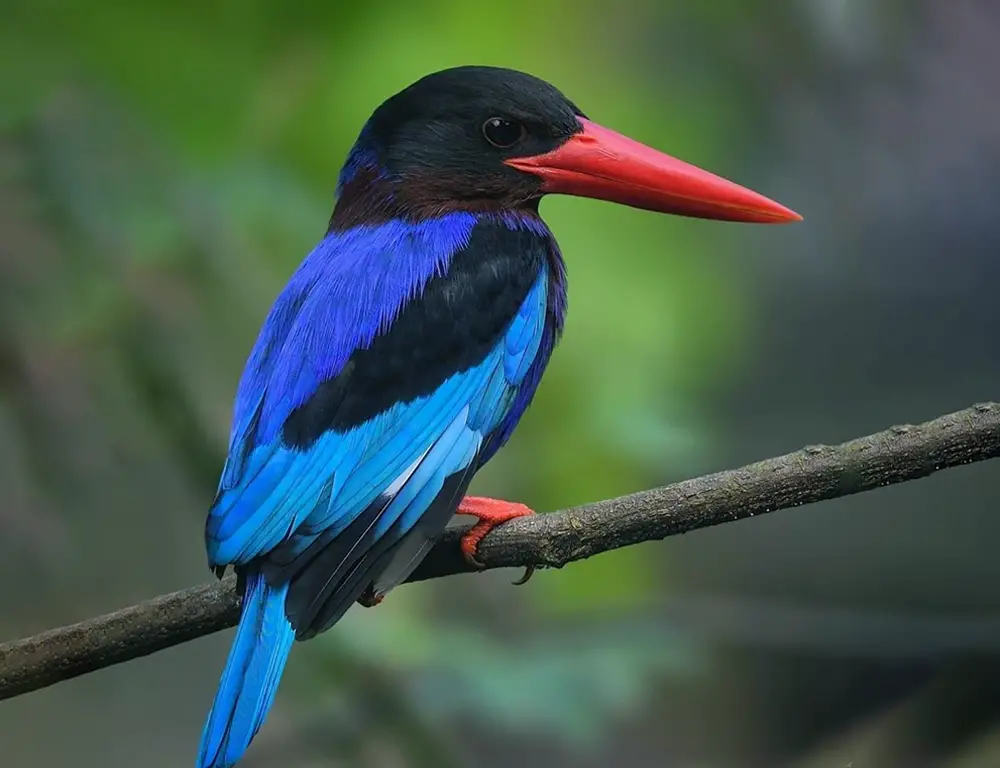
The Javan Kingfisher (Halcyon cyanoventris) plays a significant ecological role within its native habitat in Indonesia, contributing to the balance and functioning of local ecosystems in several ways.
Here’s an exploration of the ecological importance of the Javan Kingfisher:
Top Predator
As an apex predator in its aquatic environment, the Javan Kingfisher helps regulate populations of prey species such as fish, aquatic insects, and small reptiles.
By controlling the abundance of these organisms, the kingfisher helps maintain ecological balance within freshwater ecosystems.
Indicator Species
Javan Kingfishers are sensitive to changes in their habitat and are considered indicator species for the health of riparian ecosystems.
Their presence or absence can provide valuable insights into the overall ecological condition of rivers, streams, and wetlands, making them critical indicators of ecosystem health and integrity.
Nutrient Cycling
Javan Kingfishers’ feeding habits contribute to nutrient cycling in aquatic ecosystems.
By consuming prey items and excreting waste materials, they help redistribute essential nutrients within the ecosystem, promoting the growth of aquatic vegetation and supporting diverse food webs.
Seed Dispersal
Javan Kingfishers may inadvertently contribute to seed dispersal by consuming fruits or seeds of riparian plants and then depositing them in new locations through their droppings.
This process helps promote the regeneration and dispersal of plant species along riverbanks and wetland habitats.
Habitat Modification
Through their nesting and burrowing activities, Javan Kingfishers modify their habitat by excavating burrows in riverbanks or earthen dams.
These caves may serve as shelters or nesting sites for other species, such as amphibians, reptiles, or small mammals, enhancing habitat complexity and biodiversity.
Ecotourism and Education
With their striking appearance and charismatic behavior, Javan Kingfishers attract ecotourists and birdwatchers to Indonesia’s natural areas.
Ecotourism activities centered around observing kingfishers in their natural habitat can generate revenue for local communities and promote conservation awareness and education.
Cultural Significance
In addition to their ecological importance, Javan Kingfishers hold cultural significance in local communities, where they may be revered as symbols of beauty, resilience, or spiritual connection to nature.
Traditional beliefs and folklore often incorporate kingfishers into narratives or rituals, highlighting their cultural value.
Conservation Focus
Due to their ecological importance and cultural significance, Javan Kingfishers serve as focal species for conservation efforts to protect Indonesia’s freshwater habitats, riparian ecosystems, and biodiversity hotspots.
Conservation initiatives targeting kingfisher habitats benefit many other species and improve aquatic ecosystems’ overall health and resilience.
Conservation Status of the Javan Kingfisher
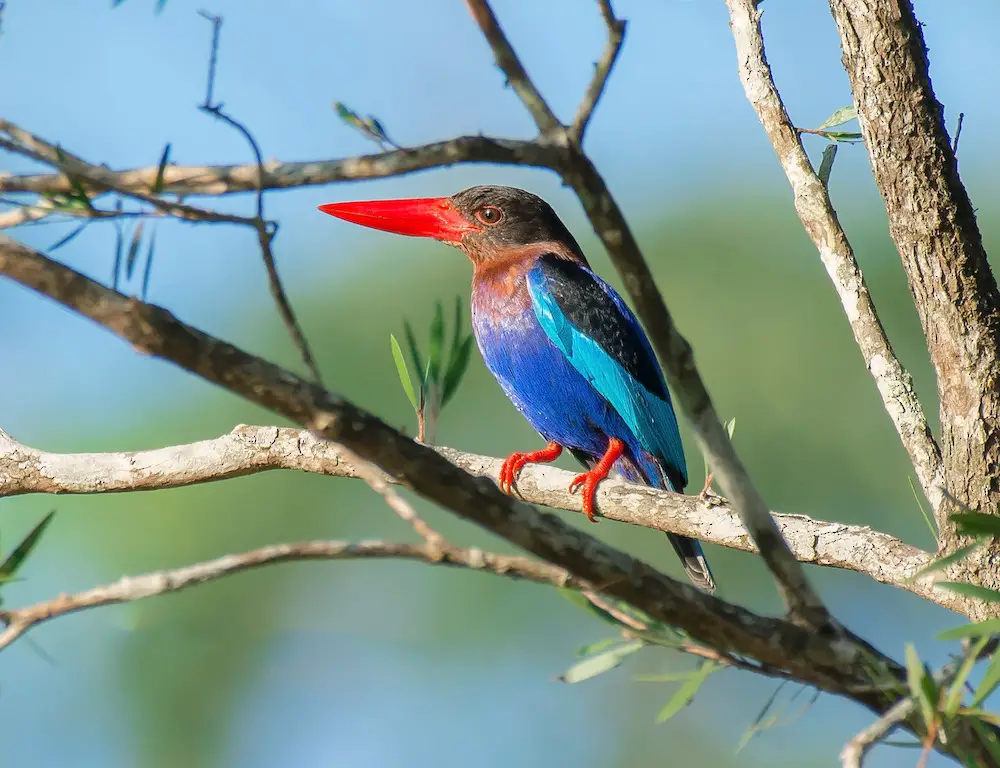
The conservation status of the Javan Kingfisher (Halcyon cyanoventris) is currently classified as ‘Least Concern’ on the International Union for Conservation of Nature (IUCN) Red List.
While this designation may initially sound positive, it indicates that the species is not facing an immediate risk of extinction. However, several concerning factors threaten the long-term survival of the Javan Kingfisher despite its current classification.
Habitat Loss
The primary threat to Javan Kingfishers is habitat loss and degradation due to deforestation and the expansion of urban areas in their native range, particularly in Java and Bali.
The rate of deforestation in these regions is alarming, with significant portions of the kingfisher’s habitat disappearing each year.
Population Decline
Ornithologists have observed a decline in sightings of Javan Kingfishers in recent years, indicating a potential decline in population numbers.
The decrease in observations and ongoing habitat loss suggest that the species may face population declines that could lead to future conservation concerns.
Deforestation Rates
The rate of deforestation in Java and Bali, where the Javan Kingfisher primarily resides, is concerning. Deforestation rates of 3% in Java and 5% in Bali directly threaten the kingfisher’s habitat, reducing the availability of suitable nesting sites and foraging areas.
Unsustainable Development
The expansion of urban areas and unsustainable development practices further exacerbate habitat loss and fragmentation for Javan Kingfishers.
As human populations grow and urbanize, natural habitats are increasingly converted for agricultural, industrial, and residential purposes, further threatening the species’ survival.
Community Awareness and Conservation Efforts
While there are protective measures in place for Javan Kingfishers under Indonesian law, including establishing protected areas and biodiversity hotspots, more concerted efforts are needed to address the ongoing threats to the species.
Increasing community awareness and engagement in conservation efforts is crucial for protecting the kingfisher’s habitat and ensuring its long-term survival.
To Recap
Delving into the world of the Javan Kingfisher has been a captivating journey. This vibrant bird, native to Indonesia, dazzles with its azure plumage and distinctive call, but its allure extends far beyond appearances.
From its dietary habits, primarily feasting on crabs and small fish, to its solitary nature and exceptional adaptability, the Javan Kingfisher embodies resilience and survival prowess.
Yet, amidst its remarkable traits, the looming threat of habitat loss due to deforestation casts a shadow on its future. Raising awareness, advocating against deforestation, and supporting biodiversity preservation efforts are imperative.
As stewards of our planet, we are responsible for ensuring the conservation of species like the Javan Kingfisher, ensuring future generations can marvel at its splendor. Let’s unite in appreciation and protection of our natural world.